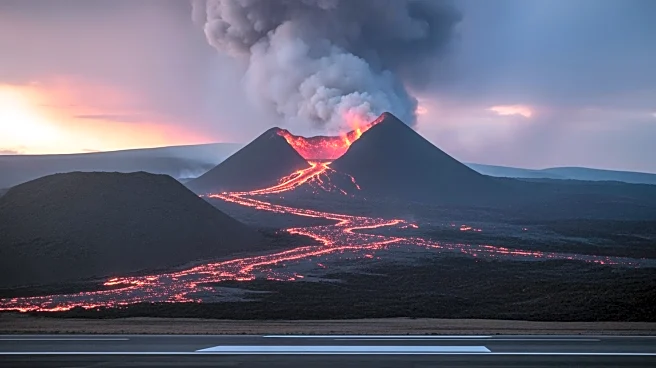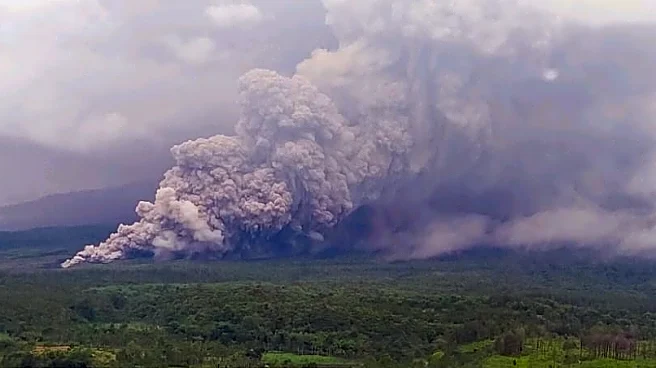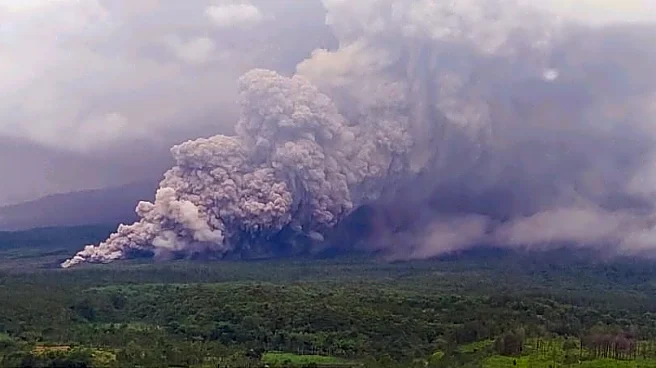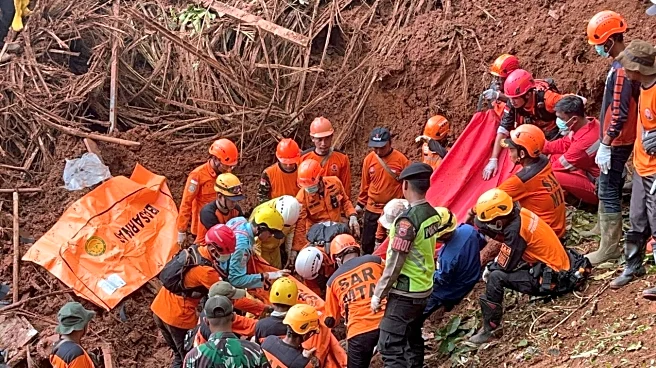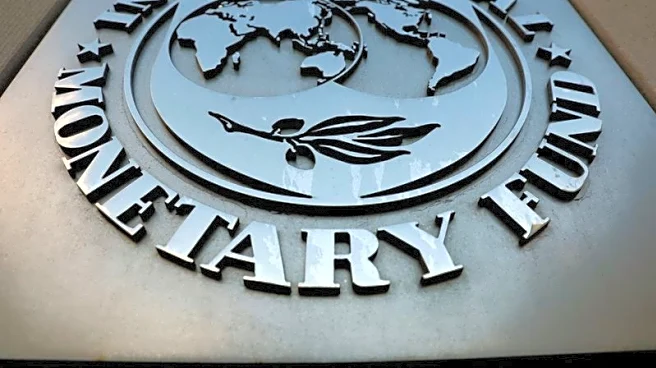What's Happening?
Mount Semeru, located on Indonesia's main island of Java, erupted on Wednesday, spewing ash and gas into the sky. The eruption prompted Indonesian officials to raise the alert status to the highest level.
The volcano is situated approximately three hours west of Bali, a popular tourist destination. As a result of the eruption, Australia's Bureau of Meteorology issued a red aviation alert, warning travelers of potential flight delays. Despite the alert, flights between Denpasar and Australia have not been canceled, and operations at Ngurah Rai airport continue as usual. The eruption has led to the evacuation of at least 300 villagers, although no casualties have been reported.
Why It's Important?
The eruption of Mount Semeru has significant implications for tourism and travel between Australia and Indonesia. Bali is a major destination for Australian tourists, and disruptions in air travel could impact the tourism industry in both countries. The red aviation alert serves as a precautionary measure to ensure the safety of travelers, highlighting the importance of monitoring natural disasters and their potential effects on international travel. The evacuation of villagers underscores the immediate threat posed by volcanic activity, emphasizing the need for effective disaster response and management strategies in regions prone to such events.
What's Next?
Authorities will continue to monitor the situation closely, assessing the ongoing volcanic activity and its potential impact on air travel. Travelers are advised to stay informed about flight schedules and any changes that may arise due to the eruption. The Indonesian geological agency will likely provide updates on the volcano's activity, and further evacuations may be necessary if conditions worsen. Airlines and travel agencies may need to adjust their operations to accommodate any disruptions, ensuring the safety and convenience of passengers.
Beyond the Headlines
The eruption of Mount Semeru highlights the broader challenges faced by regions prone to natural disasters, particularly in terms of balancing tourism with safety concerns. The incident may prompt discussions on improving infrastructure and emergency preparedness in tourist-heavy areas. Additionally, the event serves as a reminder of the interconnectedness of global travel and the need for international cooperation in managing natural disasters that can affect multiple countries.
